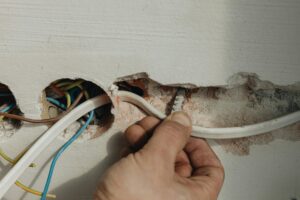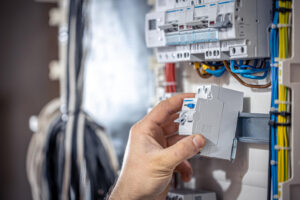
Electrical issues in your home can be more than just a minor inconvenience—they can be a serious safety hazard. Understanding how to spot common electrical problems early can help prevent more significant issues down the line. Regularly inspecting your home for these signs is crucial to maintaining a safe and energy-efficient environment. At Turner On Services, we have seen firsthand how addressing small electrical problems promptly can save homeowners from more extensive repairs and dangerous situations.
It’s essential to stay vigilant about the state of your electrical systems. Even seemingly minor signs, such as flickering lights or warm outlets, can indicate underlying problems that need immediate attention. Learning to recognize these warning signs can help you know when to call in a professional for repairs.
In this article, we will guide you through some of the most common electrical issues you may encounter in your home. By being proactive and knowledgeable, you can maintain a safer environment for you and your family. Understanding these electrical issues and how to spot them is the first step toward ensuring your home’s electrical system remains in good working order.
Recognizing Signs of Electrical Overloads
Electrical overloads occur when too many devices draw power from the same circuit, exceeding its capacity. This can cause the circuit breaker to trip or, in more severe cases, result in electrical fires. Recognizing the signs of an overload can help you take action before serious damage occurs. One common indicator is frequently tripped circuit breakers. If your breaker trips often, it might be an overload issue, so try to distribute your devices across different circuits.
Another sign of an electrical overload is flickering or dimming lights, especially when high-power appliances are in use. This indicates that there isn’t enough power to go around. Warm or discoloured wall plates around outlets and switches can signal an overload, as can buzzing sounds from outlets or switches. These symptoms suggest your electrical system is overworked and needs attention to prevent hazardous conditions.
Identifying Faulty Wiring and Outlets
Faulty wiring and outlets are significant concerns for any homeowner. These issues can stem from aging electrical systems, poor installation, or damage. One easy-to-spot sign of faulty wiring is flickering or dimming lights, which are not caused by an overload but rather by loose or damaged wires. Another clear indicator is outlets that are warm to the touch. Outlets should never feel warm; this can indicate loose wiring or a serious problem within your electrical system.
Sparks or burning smells near outlets or switches are big red flags. If you ever notice these, turn off the power to the affected area immediately and call a professional. You should also watch for any outlets that don’t work consistently or that only work intermittently. This could indicate a loose wire or connection inside the outlet. Paying attention to these warning signs can help you prevent electrical fires and ensure your family’s safety is not compromised by faulty wiring or outlets.
Troubleshooting Common Electrical Appliance Issues
Electrical appliances are a staple in every household, but they can develop issues over time. Recognizing these problems early can help prevent further damage or electrical hazards. One common issue is an appliance that won’t turn on. This might be caused by a tripped circuit breaker, a blown fuse, or a faulty power cord. Check your breaker box or fuse panel first, and inspect the power cord for signs of wear and tear.
Another frequent problem is an appliance that frequently trips the circuit breaker. If this happens, the appliance may be drawing too much power, or there could be a short circuit within the appliance itself. Unplugging the appliance and trying it in a different outlet can help determine if the issue lies with the appliance or the electrical system. Additionally, appliances that overheat or emit a burning smell should be turned off immediately and inspected by a professional, as these are signs of serious electrical faults that could pose a fire risk.
Understanding the Dangers of DIY Electrical Repairs
While DIY projects can be a fun and rewarding way to improve your home, tackling electrical repairs on your own can be extremely dangerous. Electrical systems are complex, and mishandling them can lead to serious injury or even death. One of the main dangers of DIY electrical work is the risk of electrical shock. Without the proper training and equipment, you might accidentally come into contact with live wires, leading to potentially fatal consequences.
Another risk is causing further damage to your home’s electrical system. Incorrectly installed wiring or components can create fire hazards or lead to electrical malfunctions. Moreover, improper repairs can void warranties on appliances and violate local building codes, leading to expensive fixes down the road. It’s always best to leave electrical repairs to certified professionals who have the expertise and tools needed to perform the job safely and correctly.
Conclusion
Being aware of common electrical issues and knowing how to spot them can make a huge difference in maintaining a safe home environment. Regularly monitoring for signs of electrical overloads, faulty wiring, and appliance problems helps you take timely action and avoid more significant issues. At Turner On Services, we believe in keeping our community informed and secure when it comes to handling electrical concerns.
If you suspect any electrical issues in your home or need professional advice, don’t take chances with DIY repairs. Contact Turner On Services today and let our experienced Milford electricians ensure your home is safe and your electrical system is functioning efficiently. Protect your home and family by reaching out to Turner On Services for all your electrical needs.







No comment yet, add your voice below!